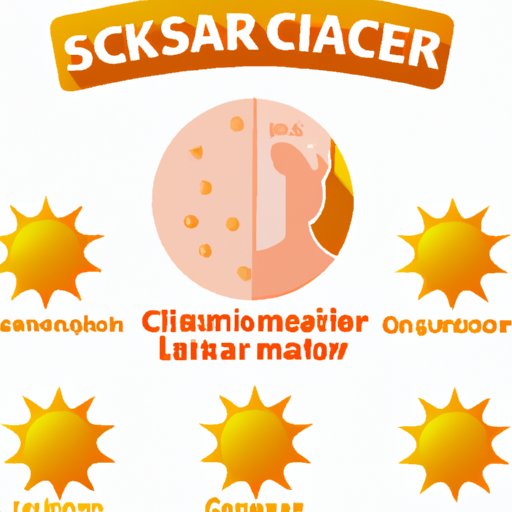Introduction
Skin cancer is the most common form of cancer in the United States. It affects millions of people each year and is caused by overexposure to ultraviolet (UV) radiation from the sun or tanning beds. There are several types of skin cancer, including basal cell carcinoma, squamous cell carcinoma, and melanoma. Depending on the type of skin cancer, treatments may include surgery, radiation therapy, chemotherapy, and immunotherapy.
Risk Factors
There are several factors that increase your risk for developing skin cancer, including:
- Sun exposure: Too much UV radiation can damage your skin cells and increase your risk of developing skin cancer.
- Family history: If you have a family member who has had skin cancer, you may be at increased risk of developing it yourself.
- Certain medical conditions: Certain medical conditions, such as HIV/AIDS, can weaken your immune system and make you more susceptible to skin cancer.
- Taking certain medications: Certain medications, such as antibiotics and birth control pills, can increase your risk of developing skin cancer.
Signs and Symptoms
It’s important to be aware of the signs and symptoms of skin cancer so that you can seek treatment if needed. Some of the signs and symptoms of skin cancer include:
- Changes in skin color: A change in the color or texture of your skin could indicate skin cancer.
- A new mole or a change in an existing mole: Look out for any new moles or changes in existing moles, such as a change in shape or color.
- A sore that doesn’t heal: If you have a sore that doesn’t seem to heal, it could be a sign of skin cancer.
Prevention
The best way to prevent skin cancer is to take proactive steps to protect yourself from UV radiation. Here are some tips to help you stay safe:
- Regularly consult with a dermatologist: Visit your dermatologist regularly for skin checks and to discuss any changes in your skin.
- Wear sunscreen and protective clothing when outdoors: Wear sunscreen with an SPF of 30 or higher and cover up with protective clothing when you go outside.
- Avoid tanning beds: Tanning beds expose your skin to high levels of UV radiation, which can increase your risk of developing skin cancer.
- Take proactive steps to detect and prevent skin cancer: Be aware of any changes in your skin and take steps to protect yourself from UV radiation.
Conclusion
Skin cancer is the most common form of cancer in the United States, and it’s important to be aware of the risk factors, signs, and steps for prevention and treatment. By taking proactive steps to protect yourself from UV radiation and consulting with a dermatologist regularly, you can reduce your risk of developing skin cancer.


